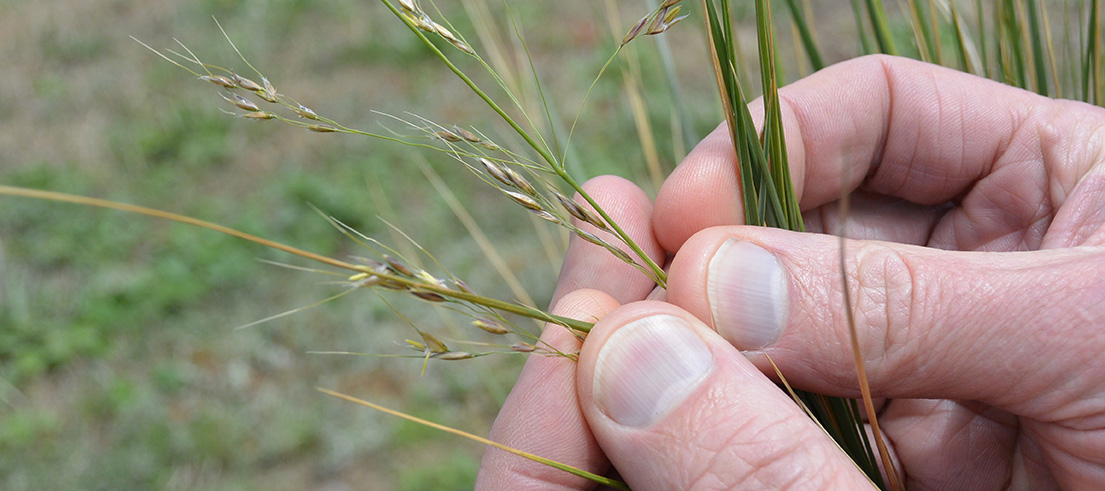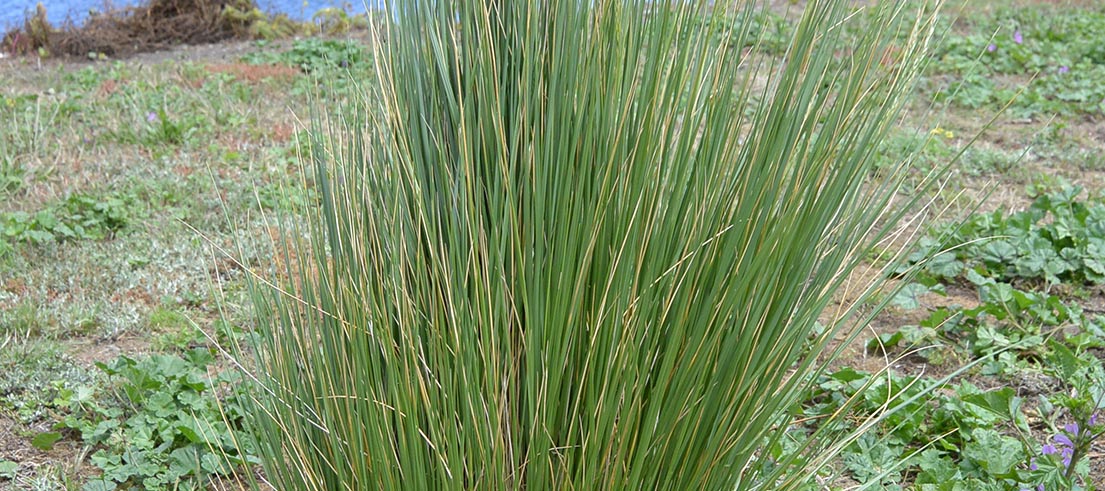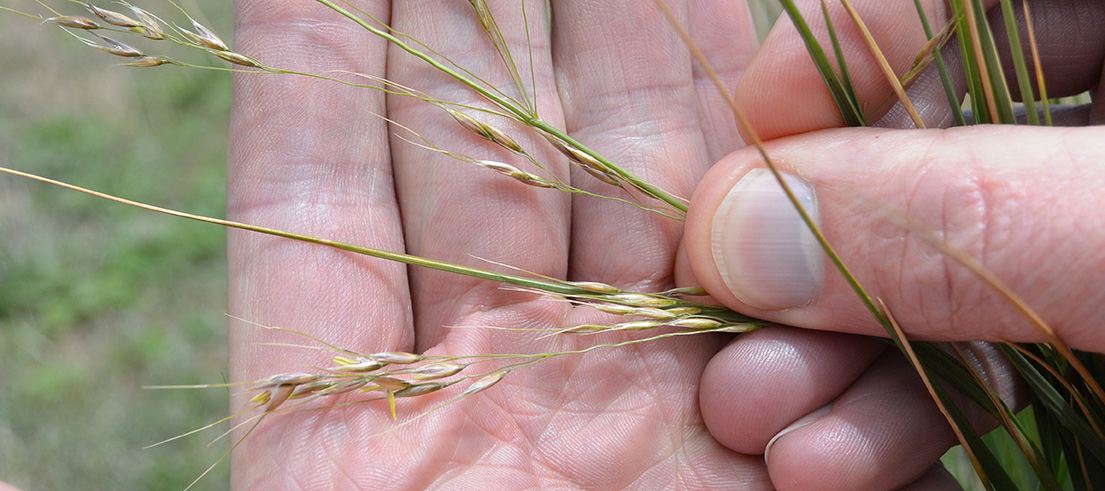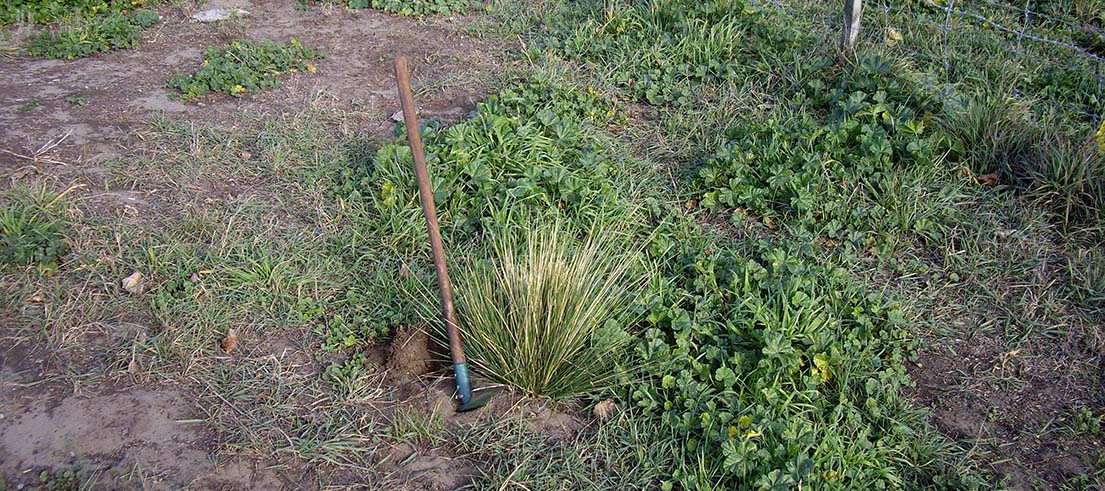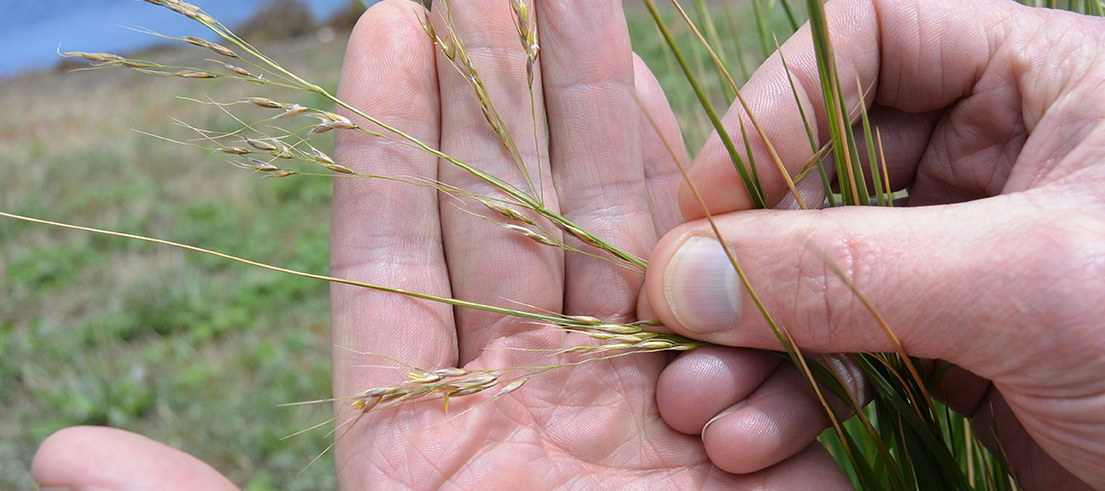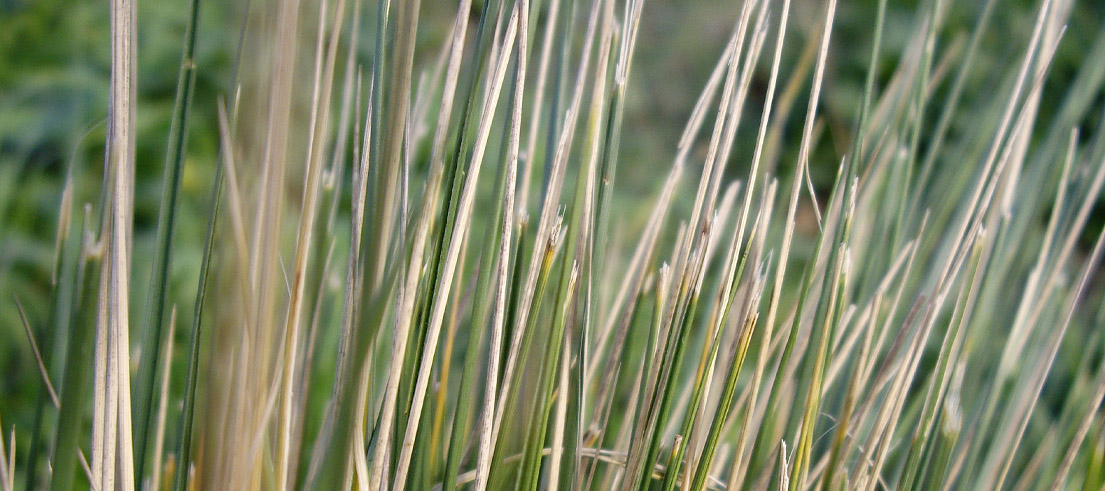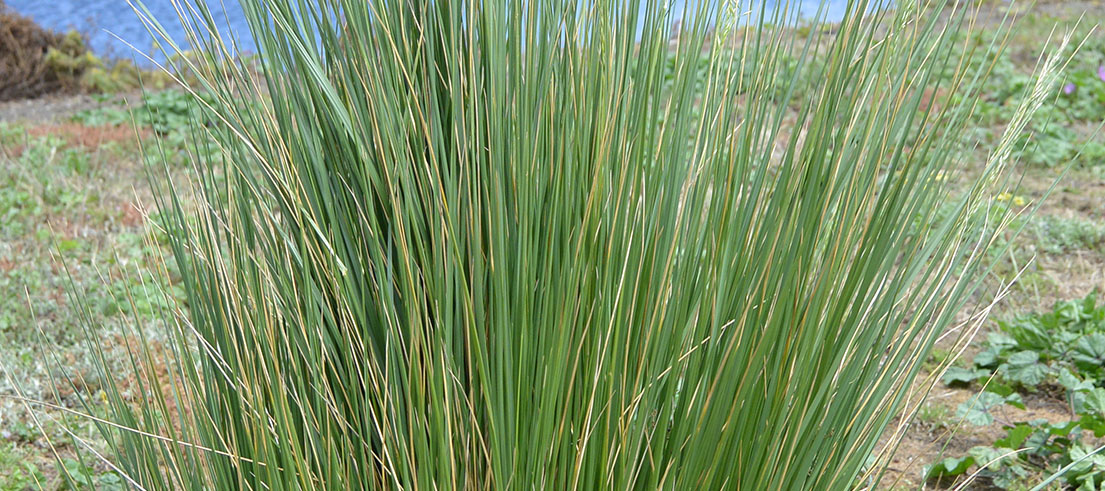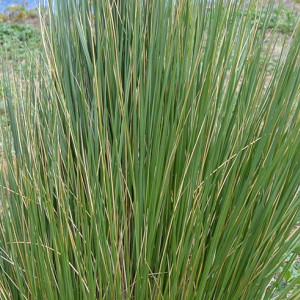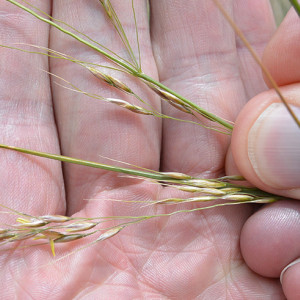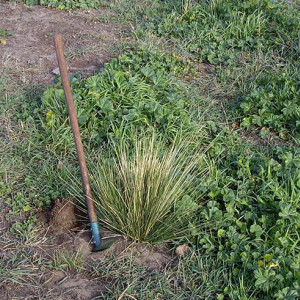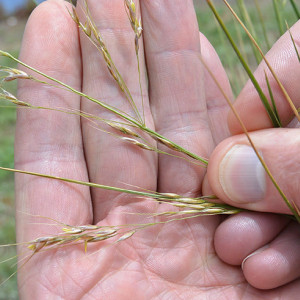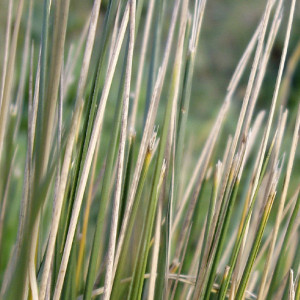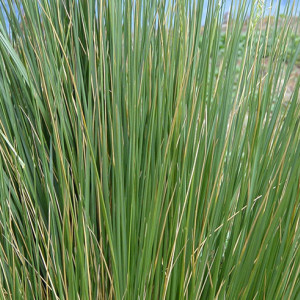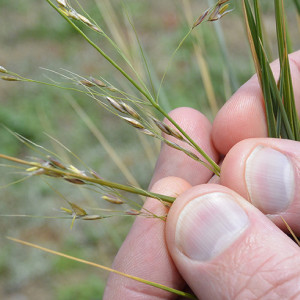Puna is a tall, tussock-forming grass with hard, awnless, nut-like seeds. It loses palatability as it grows larger and is difficult to control once established.
Description
- Leaves are narrow and long (1-3mm x 70cm), with obvious ribs on the top and bottom surface.
- Flowers are purplish brown with 1-2cm long bristles at the tips.
- Seeds have long awns in large, elongated seed heads at the top of the plant.
- Seed is also produced and held within the leaf sheaths at the base of the plant.
- Fibrous root system.
- Spreads via seeds and vegetatively.
- Habitats include riparian and other non-grazed areas.
What you need to know
Has the potential to affect the viability of pastoral agriculture in Waitaha/Canterbury’s hill and high country. It also causes adverse effects on tussock landscapes and grasslands.
Management approach
This is a declared pest managed under the Canterbury Regional Management Plan 2018 – 2038 (PDF file, 10.6MB) within the progressive containment programme.
Progressive containment
Pests in the progressive containment programme are present in low numbers or have limited distribution in Waitaha/Canterbury but have the potential to be highly damaging if they were to become widespread.
Progressively containing these pests, by reducing their distribution over time, is a cost-effective approach to prevent their more extensive spread and impact within the region.
The community should make us aware of any puna grass plants. We will work with affected landowners to undertake control of puna grass.
Rules
Any species declared a pest cannot be sold or be in a place where plants are being sold. Pest plants cannot be propagated, bred, multiplied, communicated, released, caused to be released, or otherwise spread.
Control
Do not attempt to undertake control of puna grass. Please report any sightings to us.

